Fedor Holz recently tweeted a hand from a $15k Triton tournament in Vietnam that drew heavy criticism and almost ridicule from commentators Ali Nejad and Randy "Nanonoko" Lew.
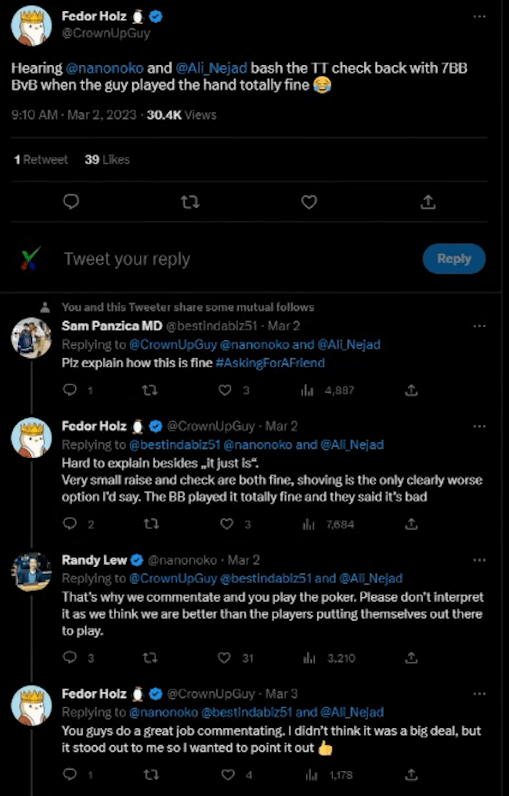
In this hand, the player in the BB with a stack of seven blinds checked after the small blind limped in instead of pushing all-in over the top, and Fedor praised him for it.
Famous live regular Sam Panzika demanded an explanation.
“Well, that’s just how it works,” Fedor replied. – A min-raise and a check are about equal, an all-in is much worse than both options. The BB player played the hand perfectly.
“That's why we comment and you play…” Nanonoko remarked.
The hand was played by the Austrian Rokita and the player from China Biao Ding. Rokita limped in from the small blind for .
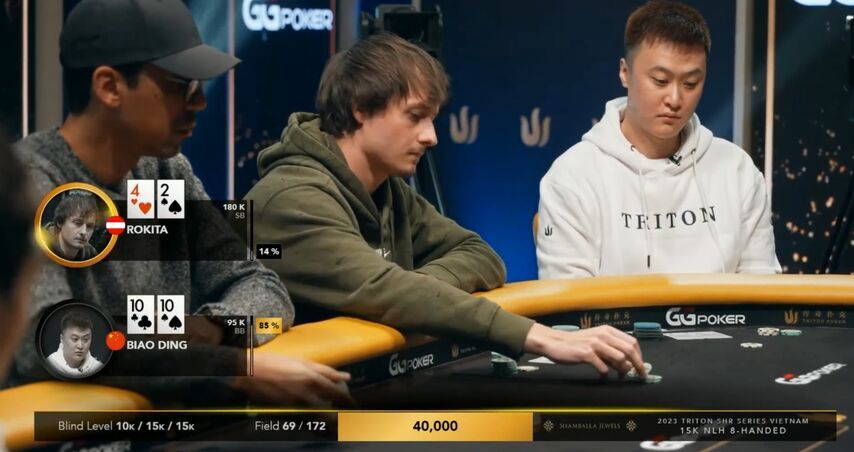
– Wants to see a free flop with 42o, well, I think that's too ambitious. Biao Ding will now put it all-in, and it will all be over, the commentators decided.
After a little thought, the Chinese checked to see the flop.
“Wow, he checks two tens next!” Nanoko was surprised. “Is this a level 60 trap I haven’t heard of?” Ali?
– I don't understand anything at all. Two tens are vulnerable against hands like ...
– Very unusual, non-standard, and unexpected for both of us!
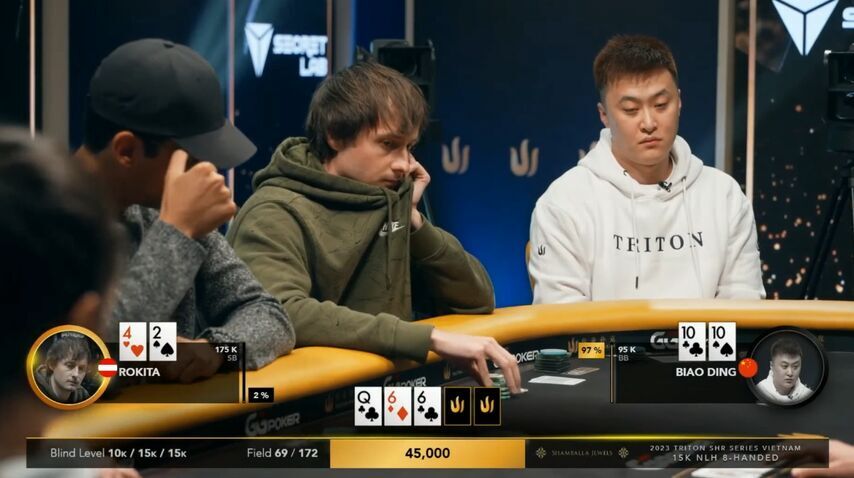
Seeing nothing interesting on the flop, Rokita checked. Biao Ding checked next.
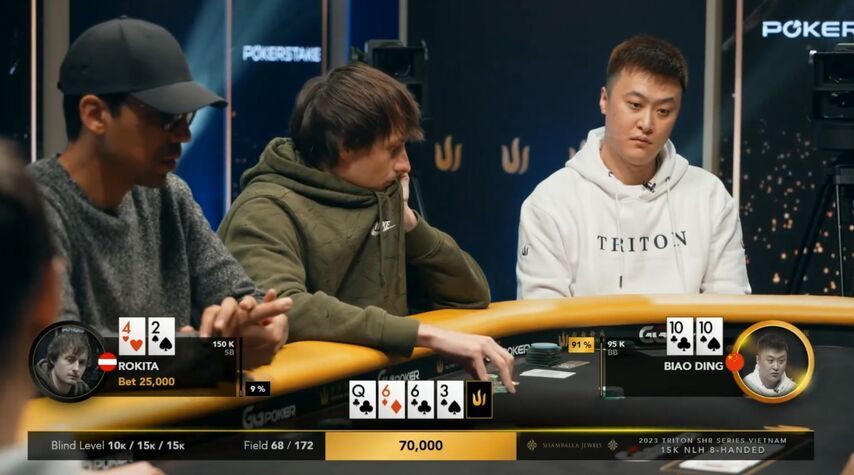
With a few obvious outs to win on the turn, Rokita bet 25,000 chips.
– Surprisingly, Biao manages to get some chips from his opponent with the help of preflop and flop tricks! Nanoko noticed.
“Wait a little longer with your praise,” Ali warned him.
– I didn’t understand, what, he can find a fold? Randy didn't understand. Did you read your hand wrong? Oh no, it's okay.
After a long pause, Biao Ding called.
“He still needs to avoid a five,” Ali reminded.
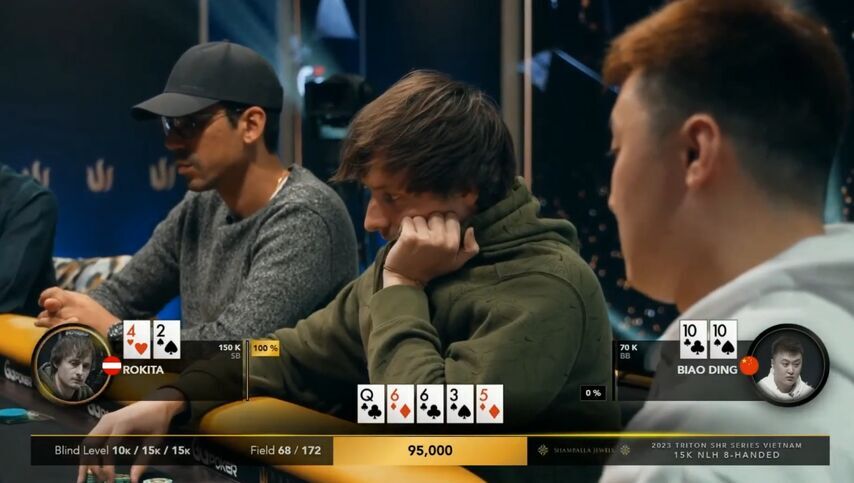
– Is this really happening? Nanoko was upset.
“For some reason, I feel personally responsible for this river,” his partner shared his emotions. – What a disgusting runout.
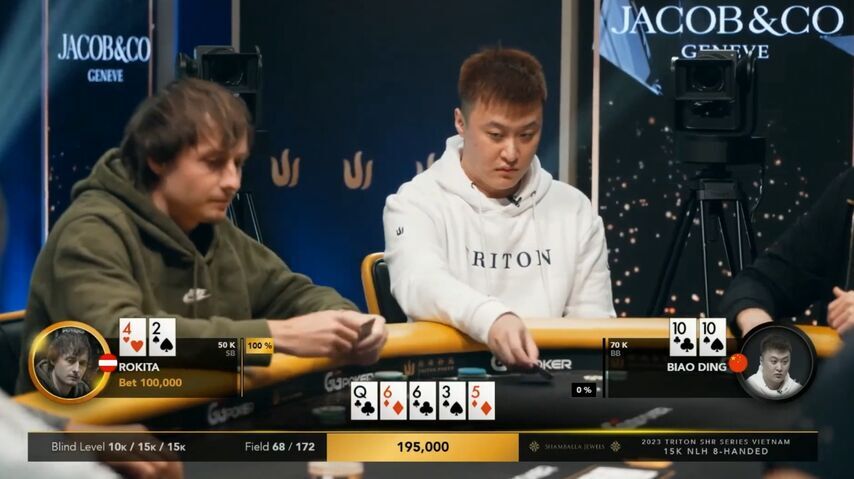
After some thought, Rokita moved all-in. Biao Ding called immediately, turned over his cards first, and immediately saw the bad news.
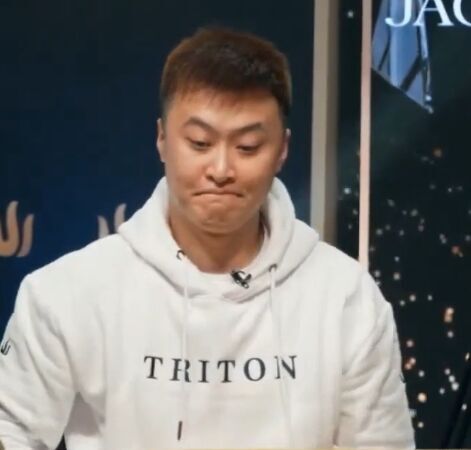
“Slowplay ended in disaster,” Nanonoko summed up, and Ali added:
– Instructive hand, right? Don't be coy with tens – just raise and force out of the pot.
– Agree. Don't let these hands see the flop for free. Villain can limp K2o, J2o, Q2o – all of them can easily outflop us. Maybe Biao isn't the most experienced player or doesn't play well with the short stack, which is why he looked so puzzled as the hand progressed. There are other tournaments in the series, you can practice.
Given the disastrous outcome of the hand for Ding, at first glance, it might seem that the commentators are right. Tens is a strong but vulnerable hand that needs to be defended, so you should have gone all-in preflop to protect your equity. However, Fedor Holz is not a bum from the railway station, but one of the most profitable players in the history of poker. And in this case, he is one hundred percent right.
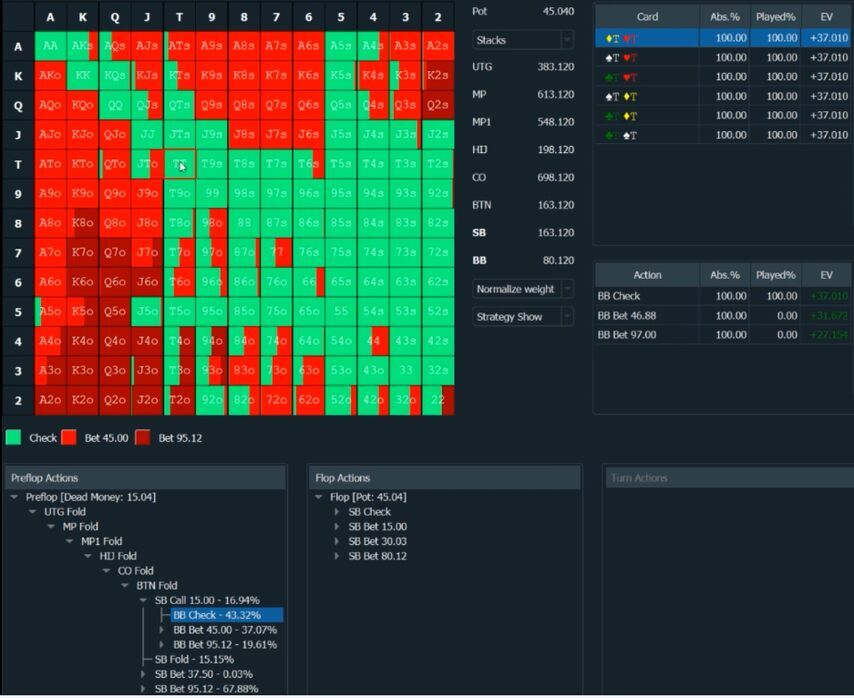
According to this calculation, the expectation for a check with tens is substantially higher than for a min-raise or an all-in. What is it connected with?
In the same Twitter thread, fellow legendary player Jason Koon explained it this way:
This is a consequence of the small blind's limping polarity. His range is pocket pairs of tens or higher, as well as junk like T5o, 96o, 73o and the like. The BB player shoves A2o, K3o, i.e. hands that block slowplays and unlock limp folds. With tens, the situation is reversed, so we check and see the flop. There is no need to defend against garbage from a limping range, and with any picture card, the small blind would go all-in himself.
Below is the correct limping range from the small blind.
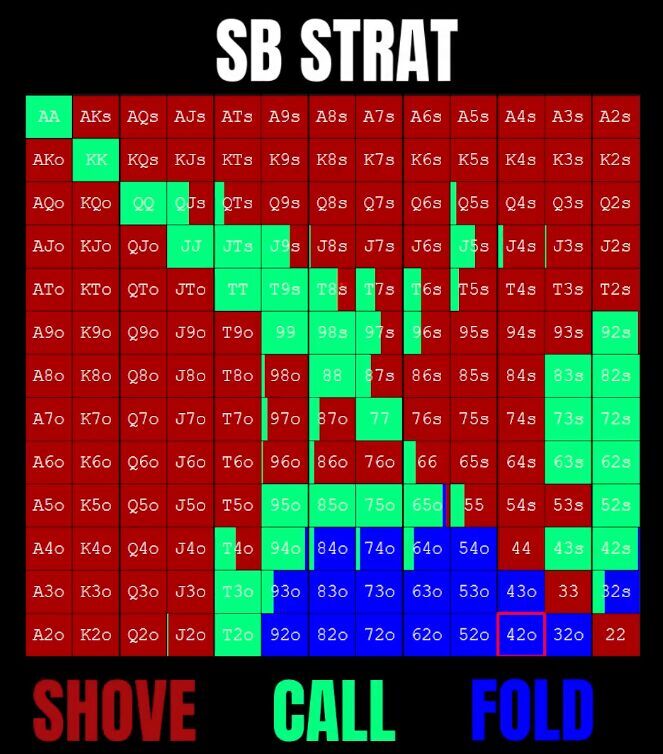
Note that 42o is a fold. The limp range consists entirely of strong pocket pairs and complete garbage. All other cards either fold or go all-in, against which the BB defends very broadly – all the way to J2s!
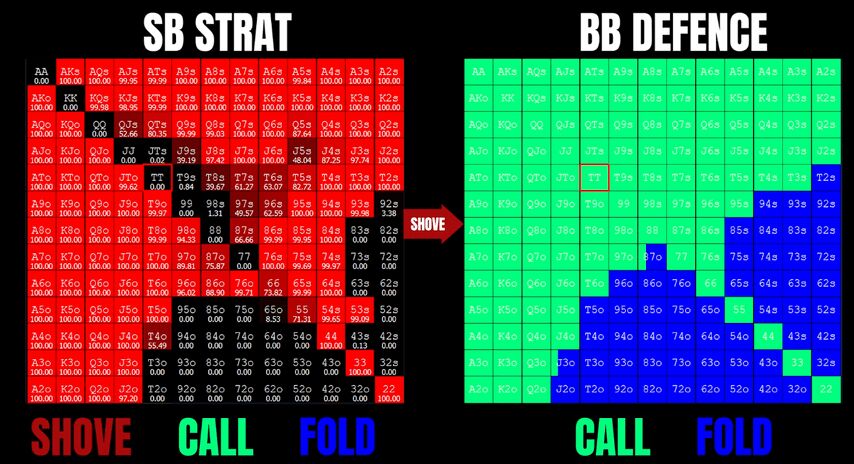
Against such a limp range a push with tens for protection there is not much use. Garbage hands will make an easy fold preflop, and the top hands will call. If we play post-flop, trash hands will either miss and bluff or get better, but not enough to beat , and lose some more chips. Therefore, the big blind checks behind almost all pairs and suited connectors, as well as full trash. The worst picture hands go all-in, and the best ones go all-in.
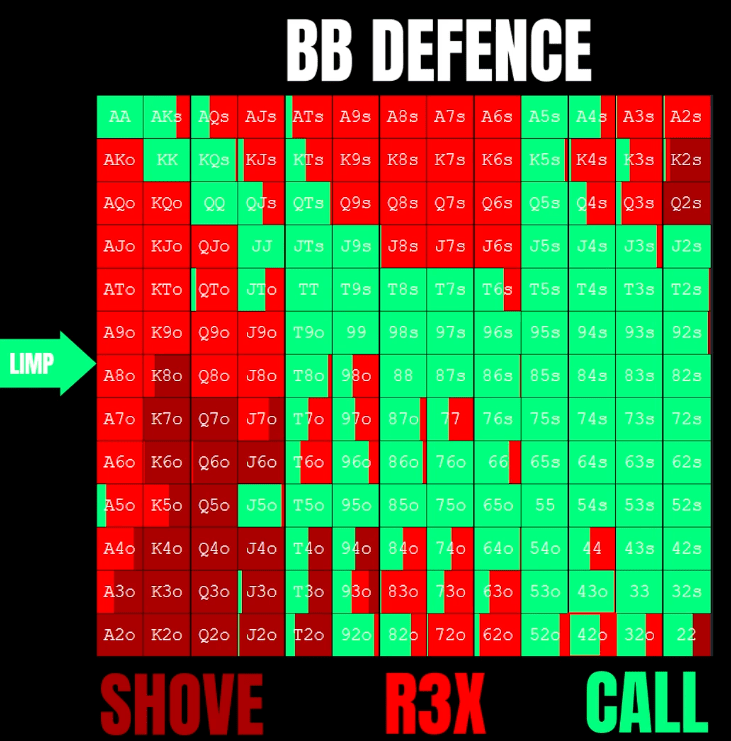
On the river, the bottom of the small blind's all-in value range is .

BB, facing an all-in, should not even fold K-high and A-high!
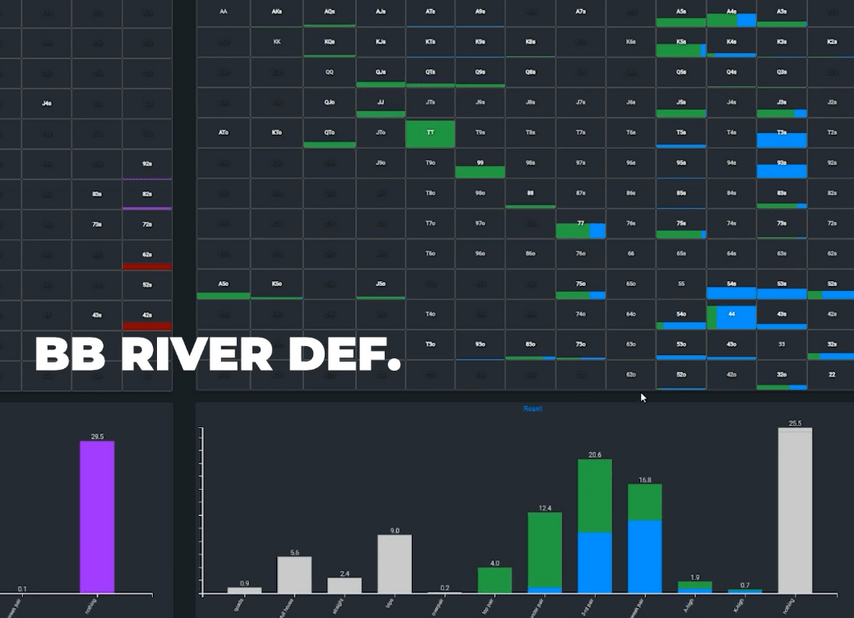
Now, if you increase the effective stack in this hand from 6 to 10 bbs, then the limping range of the small blind changes, and this is enough to make an all-in with tens the right decision.
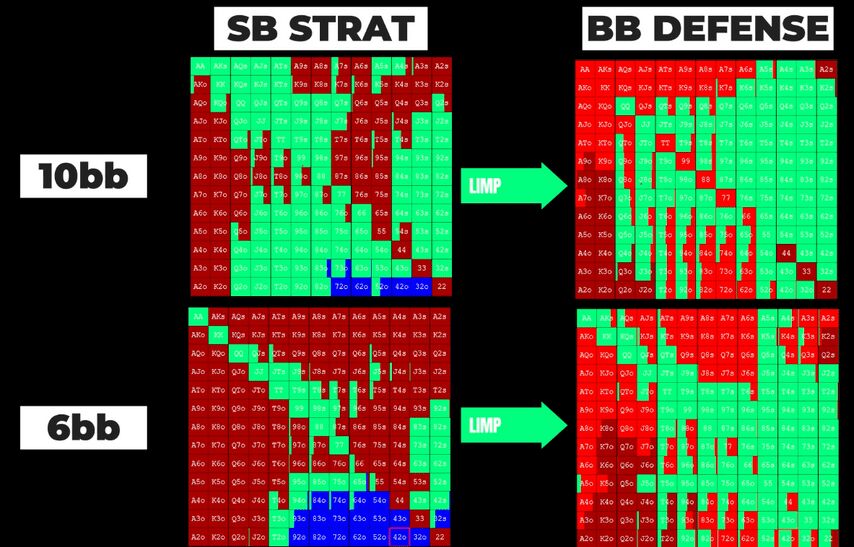
This example highlights the incredible accuracy with which elite players of the level of Fedor and Jason make decisions.

Ali Nejad is a very experienced commentator. Nanonoko is an online legend and a very experienced high-stakes cash game player.
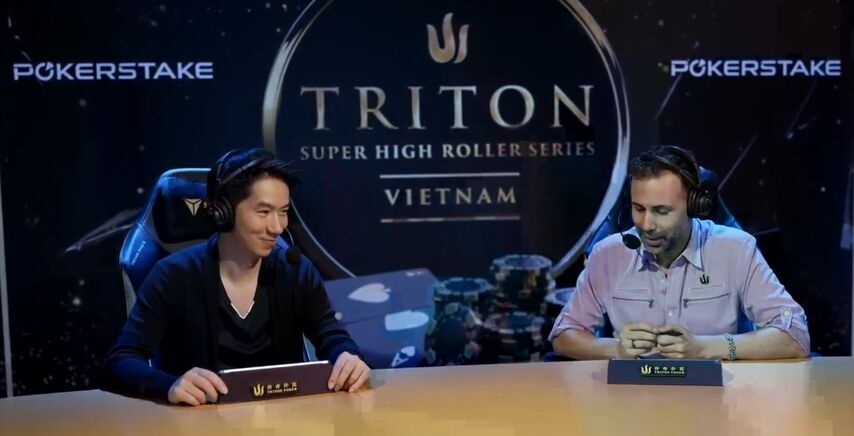
However, the subtleties of MTT are beyond their power. That is why I have always warned amateurs against tournament poker, even at low stakes.
Poker is incredibly difficult. But in a cash game, we have at least fewer variables – the table is usually the same number of players (6, 8, or 9), and their stack sizes are most often between 100 and 200bb. In tournaments, several additional difficulty levels are added at once. In the same tournament, you can play against nine or only one opponent. The effective stack in a hand can range from one to three hundred big blinds. Also, let's not forget about ICM pressure and knockout rewards, because we still don't really know how these factors affect the optimal strategy, we have only a few theories.
If you play poker for fun and enjoyment or are looking for attention, then please play wherever you want. However, if you have the desire to win money, you will have to come to grips with the study of such a dull thing as strategy. Most people learn strategy by recognizing patterns. When the same situation is repeated over and over again, we eventually notice which lines work and which do not. Alas, in poker this is easier said than done. It is so diverse that the same situations rarely occur, and the right decision does not always lead to a positive result. The invisible hand of variance prevents us from making the connection between optimal play and real money, making learning by trial and error nearly impossible.
A classic example is the hand that we have analyzed. Biao Ding busted out of the $15,000 tournament against a bad hand like 42o, which could easily have been avoided by going all-in preflop. Rokita would have folded and Dean would have kept fighting. It is very natural to consider his line erroneous.
However, poker is a game of probability. After the check, Ding had 85% to win. Any gambler will willingly agree to be in his place. Sometimes a plus bet doesn't work, but that doesn't make it a minus one.
Nowadays, poker theory can be studied with the help of solvers and other modern software. All you have to do is learn how to play 1,755 strategically unique flops in all combinations of preflop positions and actions.
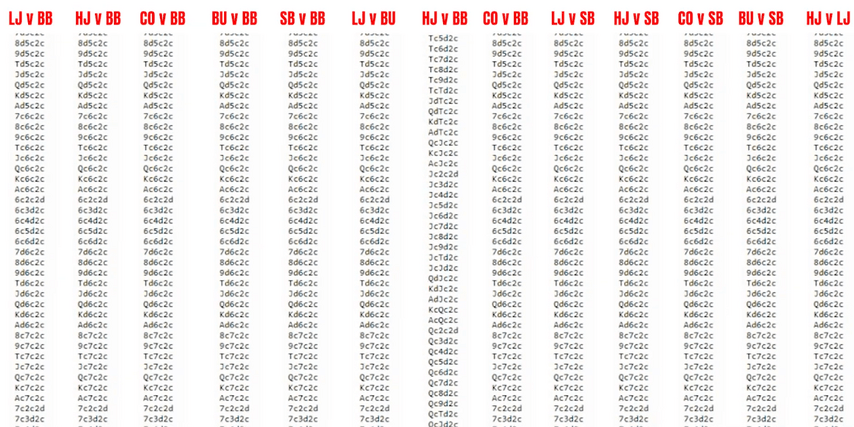
A limped pot of blind vs blind will play differently than a 4-bet UTG pot against the button. When we add to this the varying effective stack size, the varying number of players at the table, and the intricacies of ICM, the complexity of the game increases exponentially.

Therefore, in the early stages of the poker journey, I recommend that you refrain from MTTs, at least until you understand the basic principles of poker: playing ranges; understanding how equity and hand strength changes on different textures; understanding what different classes of hands want to do; the ability to balance strategy to mask the true strength of one's hand. Once you've mastered all of this, only then will you be ready to move on to the next level of difficulty.











